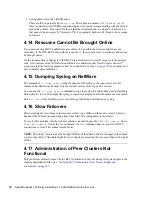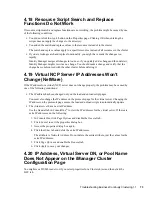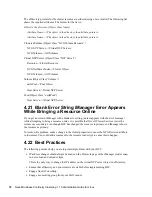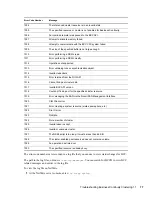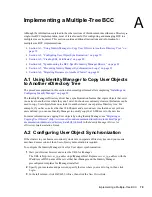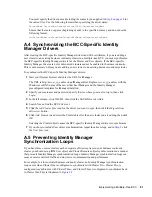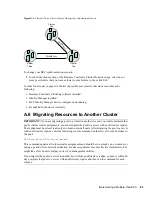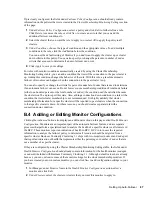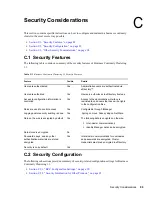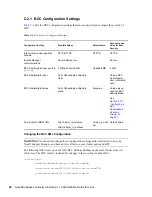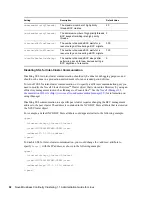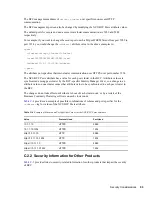
86
Novell Business Continuity Clustering 1.1 Administration Guide for Linux
8
Continue with
Section B.2, “Creating an Auto-Failover Policy,” on page 86
to create a failover
policy.
Auto-failover is not completely enabled until you create a failover policy.
B.2 Creating an Auto-Failover Policy
By default, no auto-failover policy exists for BCC. You must create an auto-failover policy for each
cluster in your BCC where you want auto-failover enabled. This is required to automatically fail
over resources from one cluster to another.
1
In iManager, under
Cluster Membership Monitoring Settings
, select a cluster and click the
Edit
link.
2
Under
Membership Threshold
, select the
Enable
check box, select either
Percent Fail
or
Nodes
Fail,
and specify either the percentage of failed nodes or the number of failed nodes.
The node failure number or percentage you specify must be met for the selected cluster before
resources automatically fail over to another cluster.
3
Under
Communication Timeout
, select the
Enable
check box and specify the number of
minutes that must elapse without any communication between clusters before resources
automatically fail over to another cluster.
4
Click
OK
to finish editing the policy.
5
Click the
Apply
button to save your settings.
B.3 Refining the Auto-Failover Policy
You can further refine auto-failover policies to give you more control over if or when an auto-
failover occurs. To do this, click the
Advanced
button to display additional fields for specifying
auto-failover criteria and adding monitoring information.
The policy for automatic failover is configured by creating rules. Each row in the Failover Policy
Configuration table represents a rule that applies to a single cluster, or to all clusters in the BCC.
Each rule contains a set of conditions. Each condition tests one of the following criteria:
The value of an indication reported by a monitor
The amount of time the connection to a cluster has been down
If the connection to a cluster is up
These conditions can be combined in any order to construct a more robust rule that helps to avoid an
undesired failover. For failover to occur, each condition of only one rule must be satisfied for the
specified cluster or clusters.
For example, a rule might contain only one condition that tests whether a connection to a specific
cluster has been down for five or more minutes. Failover occurs when peer clusters agree that the
connection to the cluster specified in the rule has been down for five or more minutes. If the peer
clusters do not agree about the connection being down (that is, one cluster has a valid connection to
the specified cluster), failover does not occur. More complex rules can be constructed that contain
multiple conditions.
Summary of Contents for BUSINESS CONTINUITY CLUSTERING 1.1 SP1
Page 6: ...6 Novell Business Continuity Clustering 1 1 Administration Guide for Linux...
Page 8: ...8 Novell Business Continuity Clustering 1 1 Administration Guide for Linux...
Page 58: ...58 Novell Business Continuity Clustering 1 1 Administration Guide for Linux...
Page 84: ...84 Novell Business Continuity Clustering 1 1 Administration Guide for Linux...
Page 96: ...96 Novell Business Continuity Clustering 1 1 Administration Guide for Linux...

